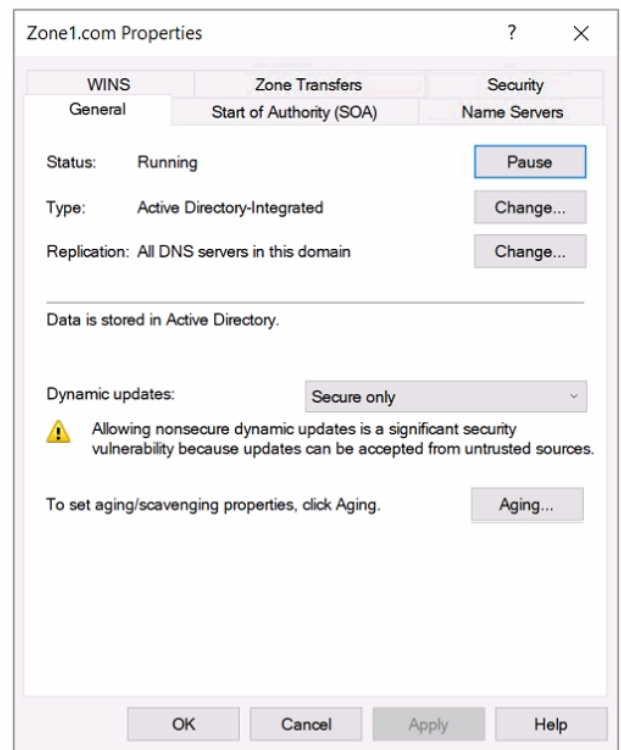
Get Microsoft AZ-800 Exam Dumps
Microsoft Administering Windows Server Hybrid Core Infrastructure Exam Dumps
This Bundle Pack includes Following 3 Formats
Test software
Practice Test
Answers (PDF)

AZ-800 Desktop Practice
Test Software
Total Questions : 202

AZ-800 Questions & Answers
(PDF)
Total Questions : 202

AZ-800 Web Based Self Assessment Practice Test
Following are some AZ-800 Exam Questions for Review
Task 12
You need to create a Group Policy Object (GPO) named GPO1 that only applies to a group named MemberServers.
Your network contains an Active Directory Domain Services (AD DS) forest. The forest contains the servers shown in the following table.

On Server1, you create a DNS zone named Zone1.com as shown in the following exhibit.

To which DNS servers is Zone1.com replicated?
You have four testing devices that are configured with static IP addresses as shown in the following table.

The test devices are turned on once a month.
You need to prevent Server1 from assigning the IP addresses allocated to the test devices to other devices when the test devices are offline. The solution must minimize administrative effort.
What should you do?
You have an on-premises server named Server1 that runs Windows Server. Server1 contains an app named App1 and a firewall named Firewall1.
You have an Azure subscription.
Internal users connect to App1 by using WebSockets.
You need to make App1 available to users on the internet. The solution must minimize the number of inbound ports open on Firewall 1.
What should you include in the solution?
Your network contains an Active Directory Domain Services (AD DS) domain. The domain contains the offices shown in the following table.

You need to deploy a Network Policy Server (NPS) named NPS1 to enforce network access policies for all remote connections.
What is the minimum number of RADIUS clients that you should add to NPS1?
Unlock All Features of Microsoft AZ-800 Dumps Software
Types you want
pass percentage
(Hours: Minutes)
Practice test with
limited questions
Support